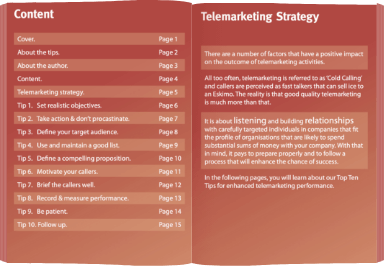Data management is the lifeblood of any sales activity. Poor targeting means wastage and weak results. Yet in b2b telemarketing, virtually every data broker claims to have ‘clean data’. Is there such a thing?
Is Accurate Data an Impossibility?
Consider the level of change every year in most companies, large and small, and you’ll understand why clean data is possibly a utopia that we will never experience. But poor quality data hampers success and increases cost per outcome no matter which method of marketing you deploy. It’s fair to say that most B2B Marketers accept that they have to lie with some degree of data obsolescence.
Data brokers spend small fortunes each year to provide good data for campaigns. However, not all brokers are created equal. We ran a campaign recently targeting a very specific job role so we searched for a data provider that promised a large number of those sorts of buyers. We eventually hit upon the supposedly leading magazine in the sector. After doing due diligence with the provider and asking all of the right questions, we eventually went ahead with the purchase.
Sadly, how wrong we were. Despite having a sample of the data, when we received the data file, the were no first names with the data. Equally, the bulk of the data contained job roles that seemingly had no relevance to the buyers we were seeking. And there were branch offices when we had requested HQ only. In the end, we refused to pay for the data.
Is there a Solution to Data Inaccuracy?
So, is there an answer to improving data quality? There are no shortcuts. Unless you spend time data gathering yourself using LinkedIn (which is far from fool proof) and other sources, you need to find a quality data broker and ask a number of questions such as:
- How the data was collected
- When it was collected
- How frequently the data is contacted for validation
- The process for the above to understand the average age of any given record
- What fields have been gathered
- The specific number of contacts for the job role you’re seeking
- Number of complete records including phone number, email address, job title, and so on
- Segmentation by size, sector, location, branch vs HQ
- Number of contacts per company. You may have 1500 records but 300 contact names which may be insufficient for a campaign
- Whether they will provide a decent representative sample of the data for you to test
There are a number of other questions that would be valuable such as whether the provider will refresh the data for you and so on.
More Work is Needed
In reality, it helps but it isn’t the answer. We believe that the still needs to be more work. Not all data comes from a broker. Some comes from the company itself. Often this is old data that may have been gathered from events, business cards, and so on. It has been sitting, ageing, on the CRM system for some considerable time. Usually, this data would benefit from some data appending to validate names and numbers etc. But, even this is no guarantee.
Increasingly LinkedIn is used as a data gathering and data cleansing methodology. The theory is that executives update their profiles possibly more frequently than the speed at which data brokers can refresh their data files. That may be true but it’s also flawed. We have an API that allows us to add decision-makers to our CRM for any given company on LinkedIn. It certainly helps a lot, but it’s only as good as the last time LinkedIn was updated for that individual.
The Only Answer is Regular Validation
The reality is that the only sure-fire way to get clean data for b2b telemarketing is to deploy a combination of those methods above. Start with a good database. Marry that up with ongoing validation conducted by every member of your team that interacts with the specific companies and decision-makers. It must be a discipline adhered to by every member of your team. Too frequently, laziness contributes to corporate CRM database obsolescence, and poor targeting.
There isn’t a quick fix. Ultimately, the only sure-fire way to maximise accuracy is to frequently speak to the contact and update the database when things change. For some campaigns, especially those high value exercises, it pays to make data gathering calls in advance to identify job roles or names. Tracking and updating email bounces is also helpful.
It’s not a Quick Fix
The above is far from a quick fix but it does support effective calling. The use of AI tools is beginning to held hard-pressed marketing and sales teams. Yet, it is far from perfect. There is no panacea.
Good data is the prime determinant of marketing success especially when it comes to cold calling. Significant time is wasted with incorrect data. The cost per outcome rises dramatically when you have a poor calling list. It makes sense therefore to get it right from the outset. Work on your data. You won’t hit the bullseye if you’re aiming at the wrong target.
If you’d like help with data building, or you’d like to know how GSA Business Development can help generate growth for your business give us a call or use the form on this site to make an enquiry.






